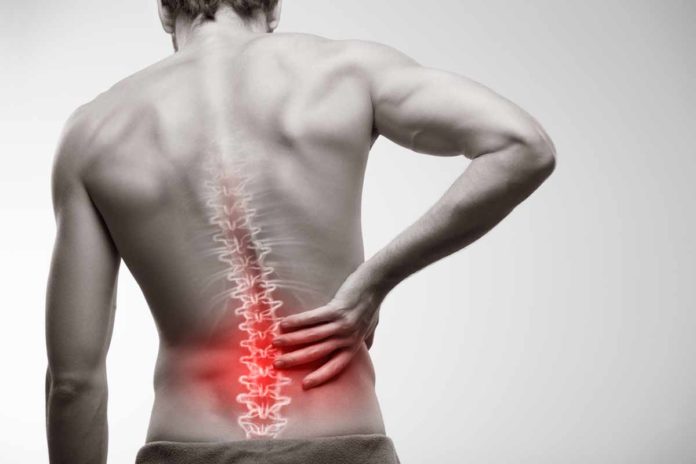There Are So Many Lower Back Pain Causes.
 No one is immune from lower back pain. Everyone, at certain times in life, will experience some measure of back pain. While for most the pain may last only a couple of weeks, for some it will become a part of their lives, the aches in their lower back becoming so excruciatingly painful and debilitating that it interferes with daily life.
No one is immune from lower back pain. Everyone, at certain times in life, will experience some measure of back pain. While for most the pain may last only a couple of weeks, for some it will become a part of their lives, the aches in their lower back becoming so excruciatingly painful and debilitating that it interferes with daily life.
As many lower back pain sufferers have come to understand, it is through knowledge of the causes of lower back pain disease process that one could learn how to deal with it, and better still, prevent it.
This post provides great information about lower back pain causes, disease conditions that manifest this as a symptom or symptoms and how they are diagnosed, treatments, and back care tips and prevention measures. This post does not replace the expert opinions of doctors and other health professionals. But, hopefully, it would guide and encourage lower back pain sufferers to seek medical attention so that they could explore with their physicians the various treatment options that are available.
- What Are The Causes Of Lower Back Pain You Should Know About?
- Characterizing Lower Back Pain Symptoms
- Simple Acute Lower Back Pain Remedies
- Chronic Back Pain Relief: What To Do For Lasting Effect
- Effective Lower Back Pain Remedies: Prevention and Management
Lower Back Pain Causes: An Introduction
Lower back pain afflicts millions of people all over the world. In the United States, around 90% of the population has experienced some pain in the lower back during their lifetime. Around 50% of these would have developed a single episode of debilitating pain that led to the loss of valuable work hours and income. Around 10% of this population would suffer from varying degrees of lower back pain for the rest of their lives.
Lower Back Pain is a Significant drag on people’s productivity, health, and income.
Just to distinguish concerning anatomy, the back consists of the upper back (also called the middle back) and the lower back. The upper back consists of the area at the junction of the neck and shoulder to the upper ¾ of the torso. Specifically, it starts below the level of the 7th cervical vertebra (C-7) at the 1st thoracic vertebra (T-1) descending to the 12th thoracic vertebra (T-12).
The lower back or lumbar regions encompasses the area of the five lumbar vertebrae (L-1 to L-5), the sacrum (S-1 to S-3) and the coccyx (or tailbone). The entire length of the spine serves as protection for the spinal cord within its spinal canal. In between each vertebra are intervertebral discs, discs of fibrocartilage which prevents them from rubbing together. Small branches of the spinal cord branch out through the vertebral foramen to innervate muscles, ligaments, and other structures in the back, pelvis, and abdomen. Small joints called facet joints allows for the lumbar region’s greater flexibility and movement. It is because of the lumbar region’s anatomical construction that much of a person’s body weight is supported here.
How does lower back pain develop? First of all, it is imperative to emphasize that lower back pain is NOT a DISEASE. It is a SYMPTOM, which tells the individual that there is something wrong in this region of his or her body.
Lower back pain develops in the following circumstances:
- Strain or sprain the muscles and tissues of the lower back
- Injured or torn ligaments during muscle activity
- Tearing or disc herniation
- Friction between the vertebrae and facet joints resulting from disc degeneration due to aging
- Nerve impingement resulting from sciatica, spinal stenosis, scoliosis, or a tumor
- Infection, such as shingles pain or postherpetic neuralgia (caused by Herpes zoster)
- Kidney or other lower abdominal disorders which manifest as lower back pain owing to shared nerve networks (known as “referred pain”)
- Greater mobility of vertebrae as a result of diminishing functionality of the facet joints and ligaments.
These are just a few of the underlying conditions that would lead to the development of lower back pain.

